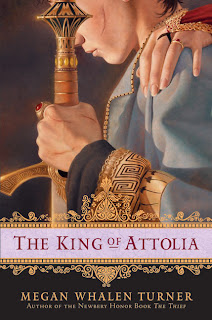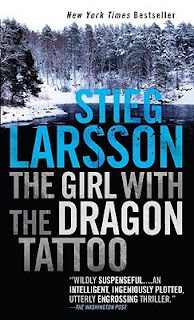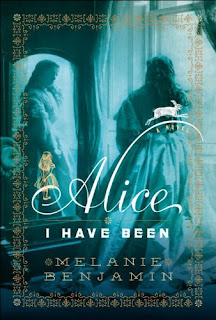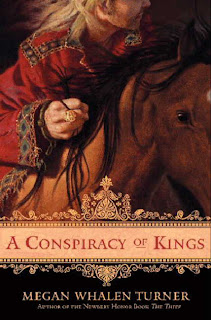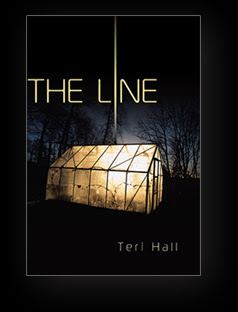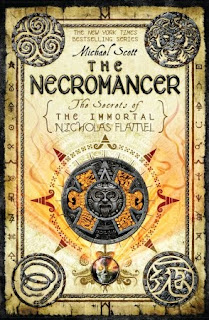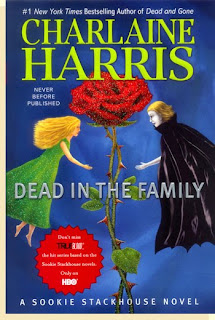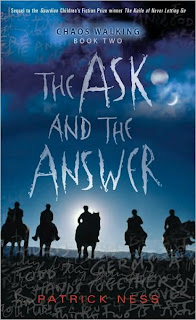
Title: The Ask and The Answer
Author: Patrick Ness
Publisher: Candlewick Press, 2009 (Hardcover)
Length: 519 pages
Genre: Young Adult; Science Fiction, Dystopian Fiction
Started: January 26, 2010
Finished: January 30, 2010
Summary:
From amazon.ca:
Reaching the end of their tense and desperate flight in THE KNIFE OF NEVER LETTING GO, Todd and Viola did not find healing and hope in Haven. They found instead their worst enemy, Mayor Prentiss, waiting to welcome them to New Prentisstown. There they are forced into separate lives: Todd to prison, and Viola to a house of healing where her wounds are treated. Soon Viola is swept into the ruthless activities of the Answer, aimed at overthrowing the tyrannical government. Todd, meanwhile, faces impossible choices when forced to join the mayor’s oppressive new regime. In alternating narratives — Todd’s gritty and volatile; Viola’s calmer but equally stubborn — the two struggle to reconcile their own dubious actions with their deepest beliefs. Torn by confusion and compromise, suspicion and betrayal, can their trust in each other possibly survive?
Review:
Once you get over the introductions to the unique universe and learn about what really happened in Prentisstown in The Knife of Never Letting Go, you get to the good stuff in The Ask and The Answer. When Todd and Viola reach Haven hoping to escape Mayor Prentiss and the army of men from Prentisstown, they find the exact opposite. Mayor Prentiss is already in Haven and the people there have already surrendered to him. Viola is mortally wounded and is whisked away to a healing house while Todd vows to obey the now President Prentiss if he saves her life. While the two are separated and not allowed to see the other, they are both molded and taken advantage of, Todd by Prentiss, Viola by Mistress Coyle who becomes the leader of the resistenace group call The Answer. In response, Prentiss forms The Ask, categorized by their torturous interrogation methods. Since it was mostly women who escaped and formed The Answer, the remaining women left in town are further subjugated by the men of The Ask (sound like something we read about before in a previous book?). Both Todd and Viola are used and unknowingly controlled by the leaders of their respective groups, taking advantage of the fact that both love the other and would sacrifice everything for the sake of each other. As President Prentiss says, in a world of numbness and information overload, the ability to feel is rare indeed (pg. 459). The two have such immense belief and trust in each other that it's hard to believe that we're reading about two 13/14 year olds, not many people at any age group have that level of unfailing trust in another person.
I love how both groups, the Ask and the Answer, were shown to be evil, only the children were portrayed as having any good intentions. Both groups are shown as chaotic, and can only achieve their goal by killing the other. Since Todd can't kill and Viola has only killed in the past to protect him, it's pretty obvious that those two are the only ones capable of bringing peace to their world before the settlers from Viola's ships arrive. The Noise is wonderfully portrayed again, with a new feature this time. It ends on a cliffhanger and will be concluded in the third book, and the ending was such a twist I honestly didn't see it coming. Need, need, need the third book!
Recommendation:
If you read The Knife of Never Letting Go and enjoyed it, you need to complete the next part of the circle and read this!
Thoughts on the cover:
I love the blue colour palette and how the Noise is illustrated on this cover (same as on The Knife of Never Letting Go's cover). The men on horseback are a nice touch, at least I'm assuming it's the army of New Prentisstown, could be the women of The Answer for all I know.






